So, as it turns out, more research goes into these 'Village of the Week' posts than I initially thought. Just in case anyone is sitting on the edge of their seat, waiting each week for a new village to grace pages of my blog, I've decided to make it a monthly thing; things are a bit hectic at the moment for me, but in the event that I do find the time to actually post one a week, the new title {that really makes no sense at all!} covers me either way.
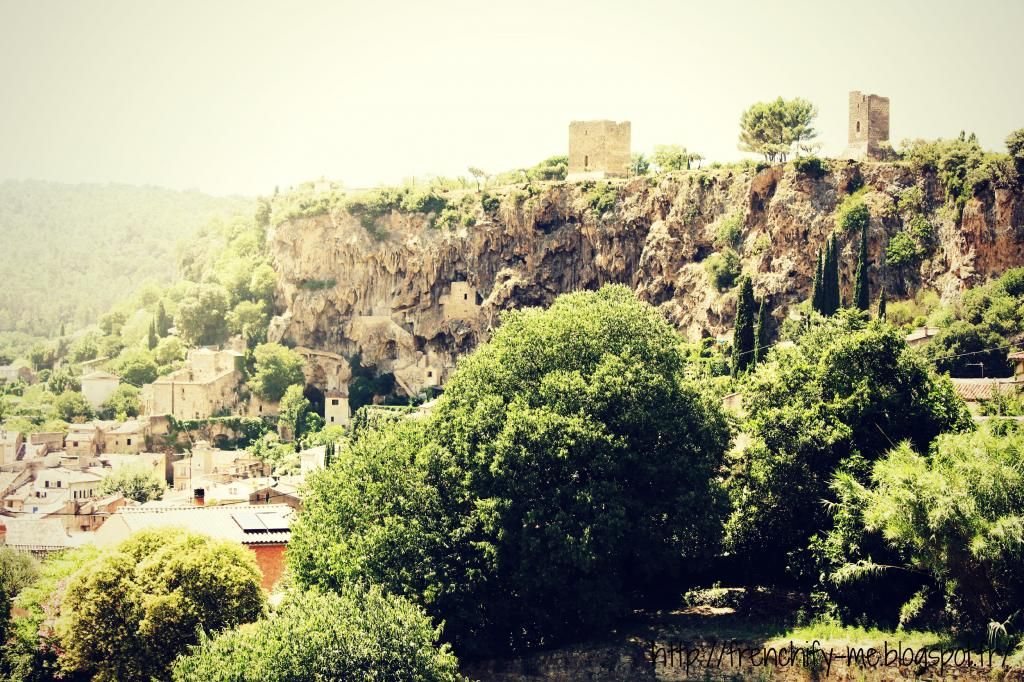 |
| View of Cotignac from the top of the road; The two Sentinelles at the top of the cliff. |
|
Cotignac is situated within the
'heart of Provence' and
is probably one of the most picturesque villages in the Var. The
village itself is situated at the base of a small valley and sits
nestled amongst trees at the foot of surrounding cliffs. The cliffs
stand 80 metres high and at the top, there are two Medievil towers, The
Sentinelles, which date back to the 12th and 13th centuries. The short decent into the village is breath taking.
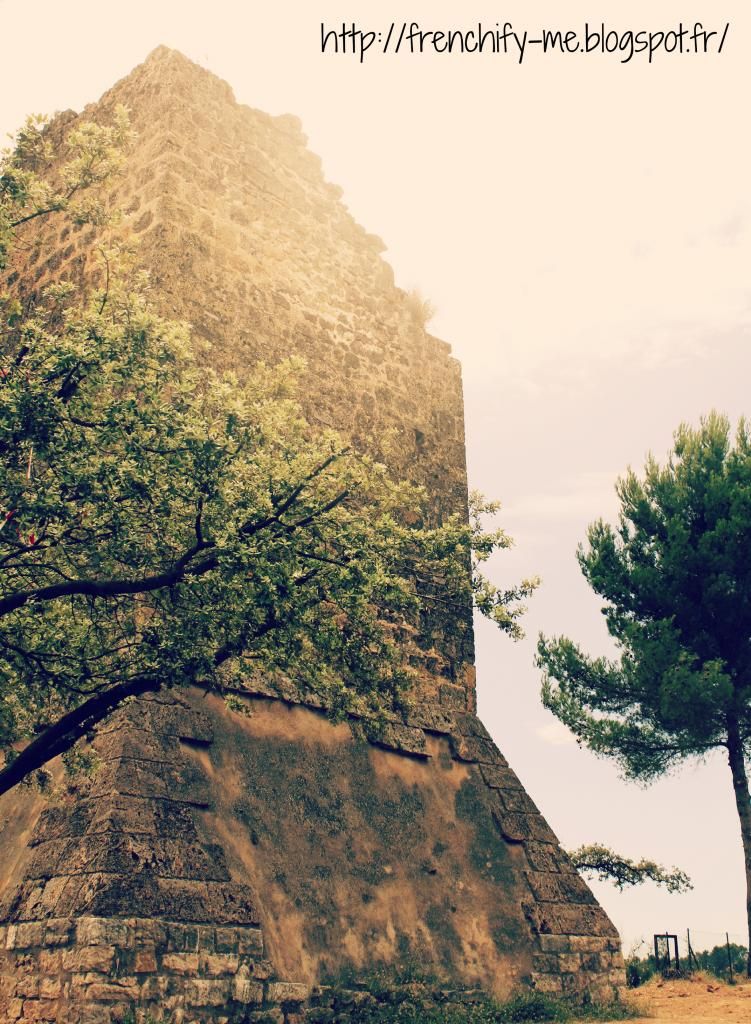 |
| One of the two Sentinelles. |
Hidden within the cliff walls are the famous
Cotignac Grottes,
dating back to before 1000 AD, although the actual date of their origin
is unknown. There is a Provencal market on every Tuesday, and a local
producers market every Friday - as well as Brocantes {Flea markets} and
various other spectacles through out the year, mainly in the summer
months.
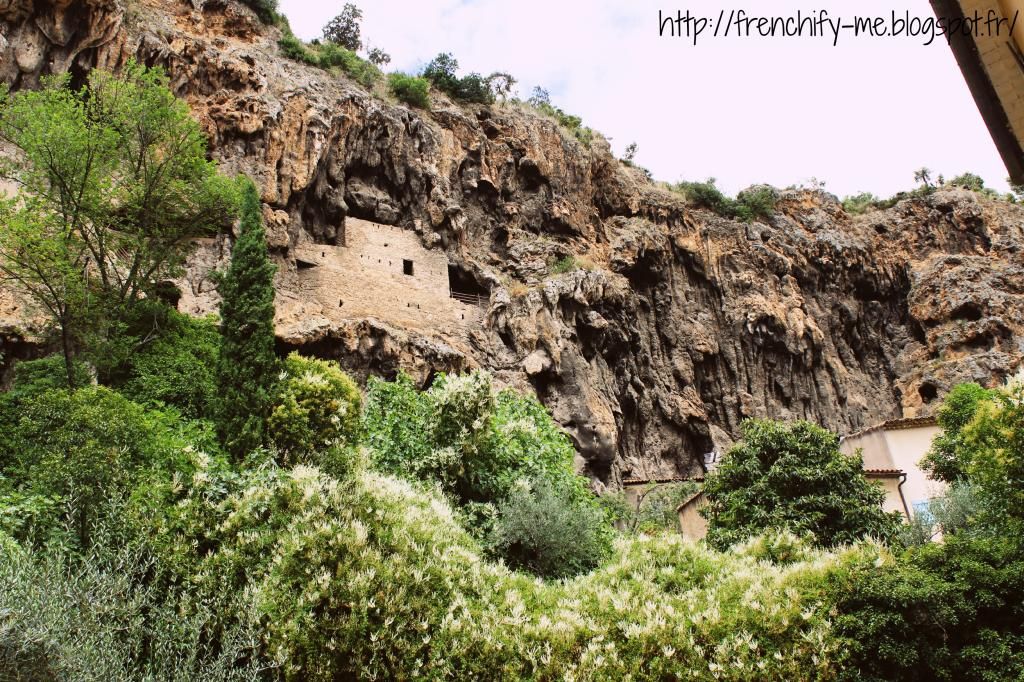 |
| Getting closer to the Grottes! |
Cotignac
village is a must to visit if you are coming to the Var. It is only a
small village with no more than 2300 inhabitants. It is 10km from
Aups
and is surrounded by many other charming villages. There is not a lot
of recorded history on Cotignac and that which there is, is actually
very vague and hard to piece together - especially if you are not a
historian or a geologist... and here's why! {It will all come together
in the end, trust me}
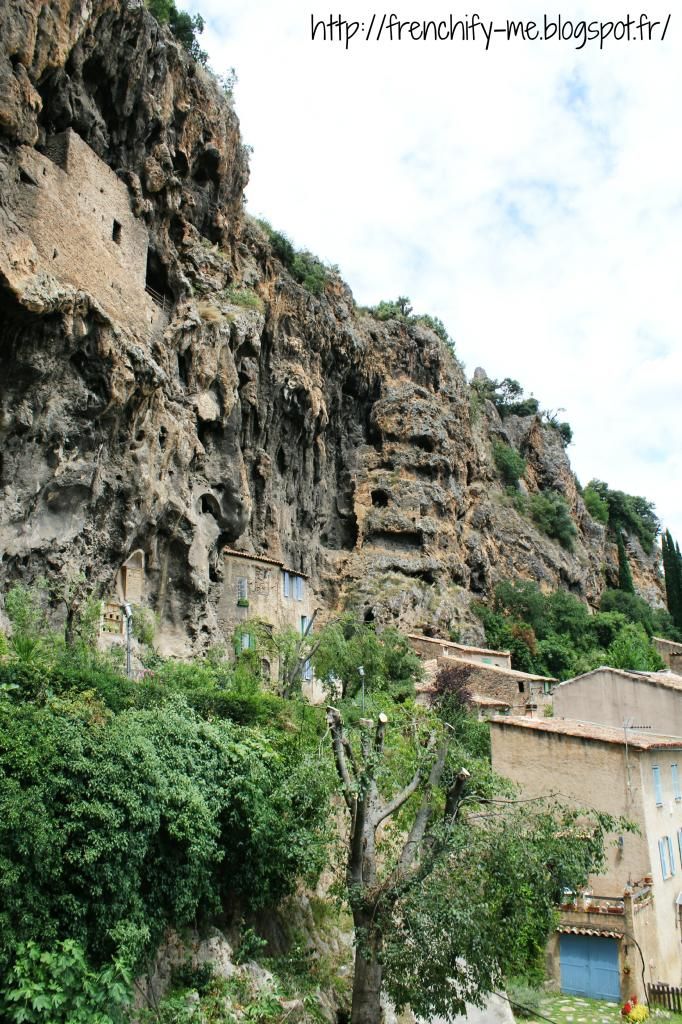 |
| The Grottes! |
The
date that Cotignac was originally founded is unknown, however, there
was a large Jewish settlement in the 6th century. Up until 1000 AD, the
Cassole River flowed over it's famous cliffs; as the main village sat at
the base of the cliffs, the waterflow was diverted and now empties into
the Argens River {a part of the French Riviera}. Most historical
records of Cotignac start from about this time {1000 AD}.
The cliffs are a truely unique sight and something that
you would never expect to see in this part of the world. I was amazed
the first time that I saw them and for a long time, nothing compared to
them! They are made of
Tufa stone, which is a type of Limestone
that forms near a water source containing a high content of dissolved
minerals. The facade of the cliff face is a mass of stalactites and
stalagmites and it was the waterflow from the ancient river that
contributed to forming these.
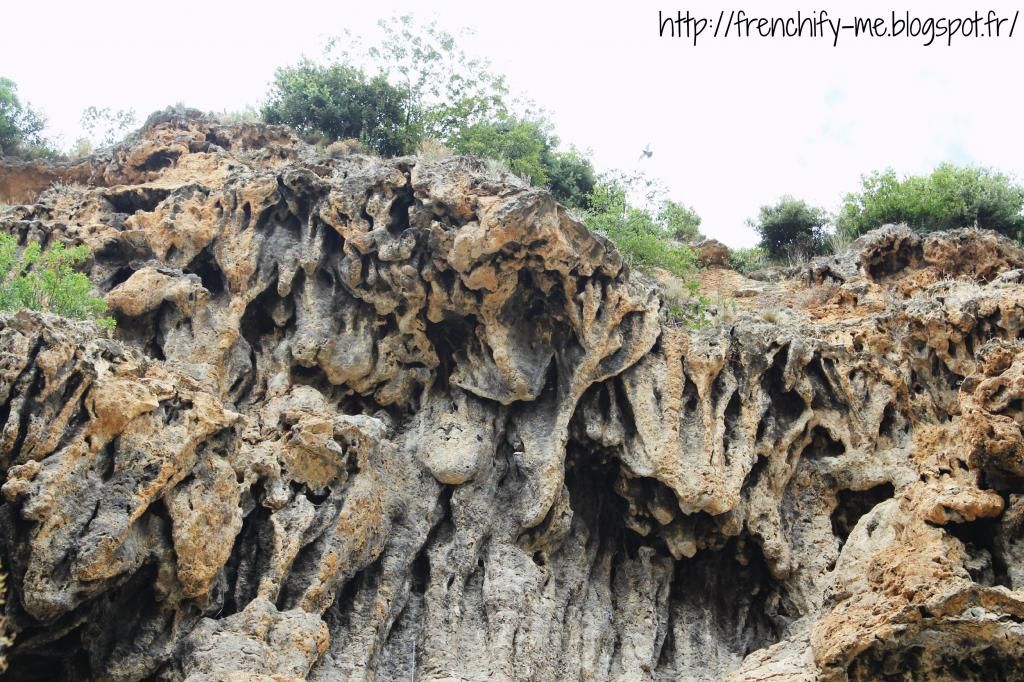 |
| The strange rock formations |
The Grottes, also known as
Troglodytes
are fascinating and not something that you are likely to forget in a
hurry! They are small cave dwellings, dug out from the cliff face and
are thought to have served as hiding places during times of turmoil and
periods of invasion. There were enough caves to hide all of the
inhabitants of the village, plus their herds and food for several
months.
 |
| The Grottes |
This is where the historical records become contradictive and
honestly, damn confusing, as they are said to date from around 1000 AD
{even though the actual cliff is much older}. Provence was at constant
threat of raids from a group people known as the Sarrasins, or
Muslims. From about 800 to 990 AD, they had camps all over the south and
south-west and although there is no evidence or records of Sarrasin
invasion at Cotignac, the village inhabitants were said to have huddled
at the foot of the Grottes, ready to go into hiding.
In
1032 AD a castle was built and even so, it is unknown the population of
Cotignac at this time. A couple of centuries later, in 1266 AD, the
Church Saint Pierre was built and is still standing today, which shows
there were a significant amount of inhabitants to justify it's
construction. There are no historical recordings of warfare during other
religious wars that plagued France, nor the French Revolution, or the
World Wars.
 |
| Get lost in little streets like this one! |
While strolling through Cotignac, you can
admire it's narrow streets and cobbled roads; medievil architecture and
ever-flowing fountains, most of which are eau potable {drinkable
water}. The weekly markets are held in the town square and are sheltered
from the hot, summer sun by old plane trees. To be honest, if you have
seen one Provencal market, you've seen them all. But dont get me wrong, a
visit to Cotignac on a market day is worth it to experience the
ambiance alone! If you are not fussed on crowds and would like to see
the Grottes, it's best to go on a quieter weekday, or a Sunday.
 |
| One of the smaller squares in the village leading up to the Grottes. |
In the main street, high on a building, you will find some Cariatides. These
are statues of what are meant to be young women. They date back to 1623
and were meant to be a sign of a persons wealth. They are barely
mentioned in the tourist books and if you weren't looking for them, you
would never know that they are even there. So, whilst on your stroll
down the Grand Rue... dont forget to look up!
The town square is framed by an abundance of restaurants, cafes and boutique shops. A popular dish to eat in the summer is Aioli which
consists of salted cod, a boiled carrot, a boiled potato, a boiled
beetroot, a hard boiled egg and of course, garlic mayonaise. Mmmm! It's
worth trying at least once, just so that you can say that you have!
I actually wrote this post a month ago, but because my photos of Cotignac were over five years old, I took a trip to the village to take some new pics. Gabe was at creche, so I was able to wander the small, winding streets at ease and undisturbed with my own thoughts to keep me company. I spent about three hours there and commenced my walk from the Sentinelles, slowly decending down to the town square where I had a coffee and then walked on to the Grottes. There is a 'Route Touristique' that leads you past the old oil mill and up to the base of the Grottes. You can litterally stand at the foot of them, even touch them. Looking directly up at the rock formations gives you a completey different perception and is definitely worth the walk. This time though, it was even better because I knew the history of them, it made the experience even more enjoyable for me and I felt like I had taken a visit to the day spa when I got back in my car. I hope you get to see them one day.









No comments:
Post a Comment